#red sorrel
Photo

"Sorrel Sweetheart" by Nneka Benjamin on INPRNT
#art#print#illustration#artist#nneka benjamin#black#digital art#waterfall#water#tropical#black woman#black art#lineless#trinidad#sorrel#red sorrel#liness art#best fruit#inprnt
246 notes
·
View notes
Photo
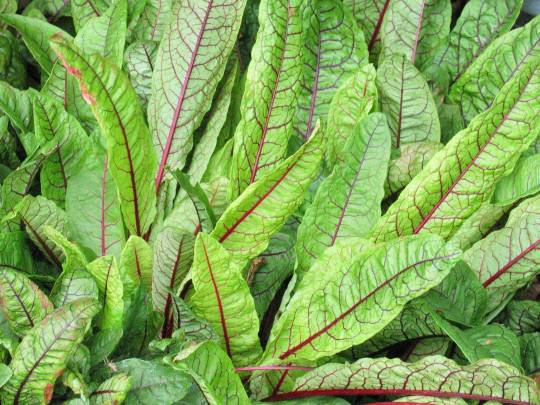
Rare Bloody Dock Red Sorrel Seeds Heirloom Non-GMO BN50 Bloody Dock Red Sorrel (Rumex sanguineus). Stunning foliage plant with elongated, medium green leaves, exquisitely veined in a brilliant burgundy-purple. A hardy perennial, it quickly forms an attractive clump, which sends up red flower clusters in early summer, followed by brown seed heads. A superb, deer-resistant accent plant. Count: 50+ 6-12 hours of Sun Sprouts in 10-14 Days Ideal Temperature: 65-75 Degrees F Seed Depth: 1/4" Plant Spacing: 10-12" Frost Hardy: Yes Type: Annuals, Perennials Sun Exposure: Full Sun Water: Regular Water Family: Polygonaceae Type: Annuals, Perennials Sun Exposure: Full Sun Water: Regular Water Planting Zones: 4-11 Family: Polygonaceae Rumex sanguineus (Red) Sorrel is grown for their edible leaves, which can be used raw in salads or cooked in soups, sauces, egg dishes. The flavor is like that of sharp, sprightly spinach, but sorrel is more heat tolerant and produces throughout the growing season. Common sorrel (Rumex acetosa) is a larger plant (to 3 feet tall), with leaves 6 inches long, many shaped like elongated arrowheads. It is native to northern climates. French sorrel (R. scutatus) is a more sprawling plant, to 112 feet high, with shorter, broader leaves and a milder, more lemony flavor than R. acetosa. Native to Europe, western Asia, and North Africa. The oxalic acid found in sorrel can replace lemon, which is often added to smoothies to balance out the taste. Grow sorrel in reasonably good soil. Sow seeds in early spring; thin seedlings to 8 inches apart. Or set out transplants at any time, spacing them 8 inches apart. Pick tender leaves when they are big enough to use; cut out flowering stems to encourage leaf production. Replace (or dig and divide) plants after 3 or 4 years. The plant grows to about 2 feet in height in clumps with pink flowers in racemose appearing during early summer. Growing Tips: Harvest tender leaves starting in early spring, remove flowering tops to keep leaves tender and to prevent unwanted volunteers. May become invasive in some climates. Like any other greens, wash sorrel clumps thoroughly in clean running water and rinse in salt water for about 30 minutes in order to remove dirt and any insecticide residues. The fresh herb should be used early to get maximum nutrition. To store, keep wrapped in a damp towel and place in the refrigerator for extended use (up to 3 days). Sorrel uses – Add to soups – Make it into a sauce for fish – Add to omelets and scrambled eggs – Add to stuffing for meat – Shred sorrel and stuff it into fish – Add to quiches – Add to mashed potatoes – Add to hummus – Add to pasta – Add to mixed-leaf and herb salads – Add to chard and spinach anywhere you would use those – Use as a filling for buckwheat crêpes – Make it into a pesto, to use in pasta, on pizzas, or with grilled salmon – Sorrel Smoothie Note: No tracking # will be provided to make the shipping cost-effective for us and free for you. Returns & exchanges Not accepted. But please contact me if you have problems with your order Our seeds are guaranteed to germinate. Once the seeds have sprouted, please understand that we cannot be held responsible for the many uncontrollable growing and climatic conditions that must be met to ensure the success of your crop(s). I try my best to make my buyers happy and would appreciate it if you'd contact me first if you have any questions or problems with your order. If you open a case before contacting me first, I will automatically block you from future purchases. Thank you for your understanding. http://springsofeden.myshopify.com/products/rare-bloody-dock-red-sorrel-seeds-heirloom-non-gmo-bn50-1
#Bloody Dock Sorrel#Red Sorrel#sorrel seeds#herb seeds#Rumex sanguineus#Rumex acetosa#R scutatus#French sorrel#green sorrel#common sorrel#Polygonaceae#organic seeds#Heirloom seeds
0 notes
Text
Red Sorrel: How to Get Rid of the Weed
Red Sorrel: How to Get Rid of the Weed
Red sorrel is a weed that amongst grass and can be easily identified and distinguished from other plants in a lawn or garden. Scientifically named Rumex acetosella, red sorrel is classified as a perennial weed and a member of the buckwheat family, which is native to Europe.
Rumex acetosella produces a lot of pollen which contributes to hay fever if the weed is grown in a yard. If you find red…
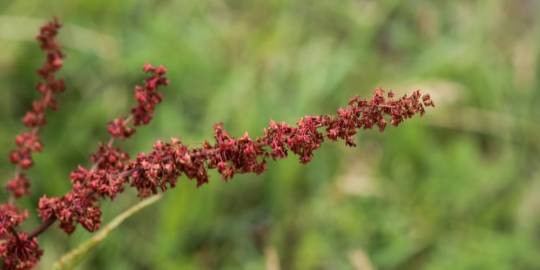
View On WordPress
0 notes
Text




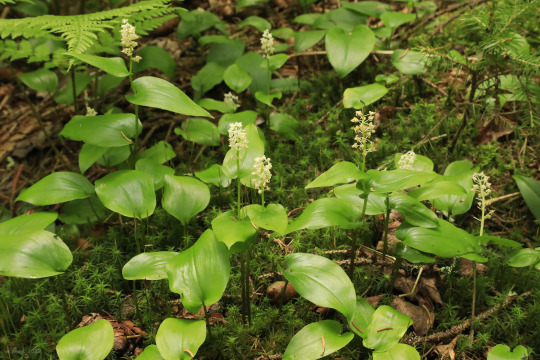

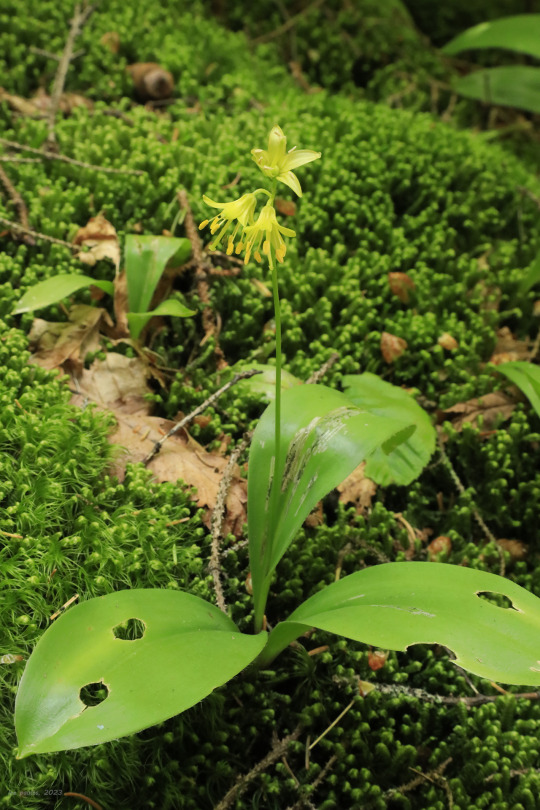
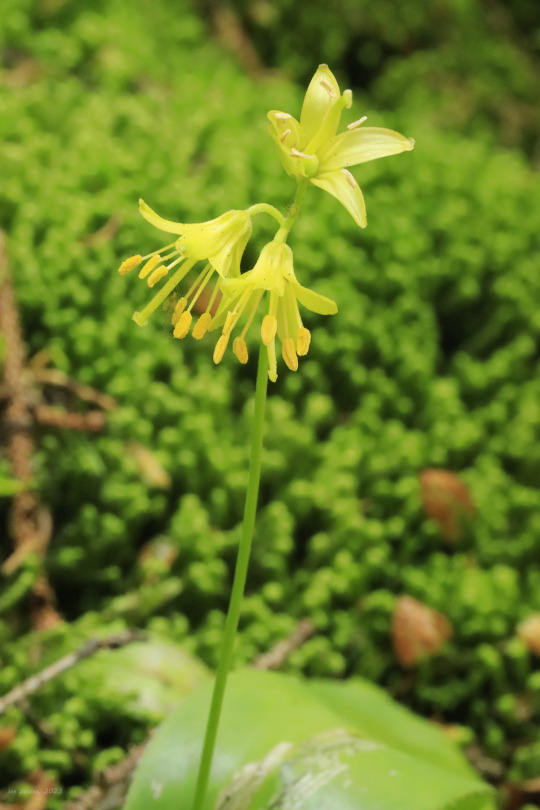





Walk with me: Visit to a high-elevation red spruce forest. The red spruce (Picea rubens) forest on top of Red Spruce Knob, the ninth highest peak in West Virginia, provides a bittersweet glimpse back in time to the primeval beauty and solitude of such places prior to the arrival of the logging companies in the mid-Nineteenth to early Twentieth centuries. The loggers stripped the mountains bare and set in motion the massive wildfires that burned away everything, including the soil itself, down to solid bedrock. Almost a century later, the forest is regenerating and in some places, such as Red Spruce Knob, has regained the richness and vitality of a healthy boreal ecosystem.
From top: a view of Red Spruce Knob, in the far distance, from the Highland Scenic Highway overlook; Canada mayflower (Maianthemum canadense), a ubiquitous understory component of the forest, along with mountain woodsorrel, yellow clintonia (a.k.a. blue-bead lily), hobblebush viburnum, Indian cucumber, green false hellebore, and various mosses and ferns; yellow clintonia (Clintonia borealis) in bloom; pink lady's slipper (Cypripedium acaule); green false hellebore (Veratrum viride) on eastern hay-scented fern (Dennstaedtia punctilobula); and mountain woodsorrel (Oxalis montana).
#appalachia#vandalia#west virginia#wildflowers#spring#flora#allegheny mountains#monongahela national forest#red spruce knob#highland scenic highway#red spruce#canada mayflower#yellow clintonia#blue-bead lily#pink lady's slipper#false green hellebore#eastern hay-scented fern#mountain woodsorrel#mountain wood-sorrel#boreal forest
208 notes
·
View notes
Text



new outfits for sorrel and faron :-) half in anticipation of lightfall and half. i mean. big outfit changes are a must if character development is/was happening i think right....
#destiny 2#sorrel#faron#alittle sad at faron not wearing the red scarf anymore just cause it was such a nice pop of color but.#the narrative. the lore. the character development. its important.
161 notes
·
View notes
Text
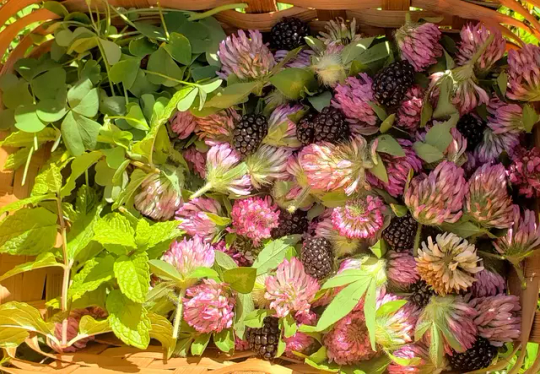





July magic
58 notes
·
View notes
Photo




Some drawings for a neopets brush challenge that I did for the Toonkind D&D server! (Planning on drawing the rest eventually, but here’s what I got for now lol.)
#my art#obby art#neopets brush#neopets brush art challenge#my ocs#ocs#d&d ocs#Primrose Poodle#Tally Mark Valentino#Ruby Red#cassius sorrell yune deed blackmont iii#art challenge
35 notes
·
View notes
Text

22 notes
·
View notes
Text

She's freaking gorgeous.
12 notes
·
View notes
Photo

An extremely messy draft of moving the births around for the 1st arc. Subject to change.
The number is the relation of moons in comparison to the birth of Firestar. For instance, Cinderpelt is 7 moons younger than Firestar, changed to be born a moon after he joins ThunderClan.
Some cats have notes of their planned mentor. For instance the four starting Thunder apprentices (Fire, Sand, Gray, Dust) all receive the major four litter (Cinder, Bright, Bracken, Thorn).
#Warrior Cats#po12#rewrite#au#art#yes squirrel and leaf are born before SkyClan stuff#Fern is being mentored by Speckle because she wants to be a Nurse#Snow Rain Sorrel Soot all fear/bully Bramble and Tawny#So Ash is getting Dark as no one is aware Darkstripe is the father#Dust gets assigned Mouse instead of Dark after Red dies#DustFern age gap and kit age fix#BrackenSorrel always had an age gap. this just makes them a bit closer by coincidence#they get together as warriors anyway with only a year age gap it's fine#Snow lives. Mistle is taken by the hawk#Silver dies later#BrambleSquirrel age gap heavily improved as he's a new apprentice when she's born now
46 notes
·
View notes
Text





🚨 News Flash 🚨 The Christmas Menu 2023 event last call for order will be December 10! So be sure to secure your order as soon as possible to avoid disappointment. Can’t wait to get started on crafting your stress-free Christmas feast. Again thanks to all my supporters as we make 2023 a year to remember!
•
For those yet to order, you don’t want to miss out on some festive sensations:
✨ Jerk Chicken
✨ Curry Goat
✨ Jerk Sausage
✨ Macaroni and Cheese
✨ Fruit Cake
✨ Cookies ‘n’ Cream Cake
✨ @baileysofficial Red Velvet Cake
✨ Pineapple Upside-Down Cake
✨ Apple Crumble
✨ Sorrel (non-alcoholic)
✨ Jerk Ketchup (condiment)
•
Looking to have a bountiful feast this Christmas and need a few items to make your dinner table truly festive? Email me for the full menu, pricelist and how to order — [email protected] !
•
#jerkchicken #jerksausage #jerkketchup #currygoat #macaroniandcheese #macaronincheese #fruitcake #blackcake #rumcake #rumcakes #jamaicanrumcake #cookiesandcream #baileys #irishcream #redvelvet #baileysredvelvet #pineappleupsidedowncake #pineappleupsidedown #applecrumble #sorrel #cake #christmas #christmasdinner #christmasdinnertable #christmastime #christmasdinnerideas
#Christmas menu#Christmas#cake#cakes#cakemeistro#jerk chicken#Apple crumble#jerk sausage#curry goat#baileys red velvet#red velvet#Oreo#cookies and cream#pineapple upside down#sorrel#fruit cake#black cake#rum cake#Jamaican cuisine#made to order#London#London food
4 notes
·
View notes
Photo

Lá Fhéile Pádraig Sona Duit!
(“Happy Saint Patrick’s Day to you” in Gaelic)
Saint Patrick’s Day is a celebration of Irish culture and heritage held annually on March 17th in most English-speaking countries and regions with an Irish diaspora. The shamrock is the symbol of Ireland but what, botanically speaking, is a “shamrock”?
The word comes from the Irish Gaelic word “seamrog” which means “little clover”, but this is simply a common name that can apply to several clover-like plants native to Ireland. All clover species belong to the genus Trifolium, which is a member of the Fabaceae plant family which includes peas and beans. The genus name Trifolium literally means “three leaves” in Latin and clovers almost always bear a leaf composed of three equally sized leaflets. Four leafed clovers can occur in almost all clover species and are thought to be the result of a recessive genetic mutation due to their rarity. The three leaflets symbolise the Holy Trinity in Irish culture, and it is said Saint Patrick used the plant to help explain Christian teaching during his mission to convert the Irish to Christianity.
There is no single species exclusively officially known as a “shamrock”. Several clover species are commonly called shamrocks in Ireland, including the Red Clover (Trifolium pratense), White Clover (Trifolium repens), Purple Clover (Trifolium pratense purpureum), and Lesser Trefoil (Trifolium dubium). An edible wild plant called Wood Sorrel (Oxalis acetosella) is also commonly called a shamrock. Despite the visual similar to clover leaves, the Wood Sorrel belongs to a different plant family and is only distantly related to true clovers.
If you’re putting up shamrock decorations or wearing festive clothes adored with shamrocks today, see if you can decide which species is the true shamrock.
#katia_plantscientist #plants #botany #botanical #botanicalphotography #saintpatricksday #saintpatricksday2023 #ireland #irish #irishculture #nature #clover #woodsorrel #whiteclover #redclover #trefoil #shamrock #plantidentification #plantfacts #leaves #cloverleaf #green #saintpatrick #flowers #plantbiology #trifolium #fabaceae #oxalis #wildflowers #plantscience
#katia plant scientist#plants#botany#botanical#photosynthesis#saint patricks day#Ireland#irish folklore#nature#clover#wood sorrel#white clover#red clover#lesser trefoil#green#wildflower#oxalis#plant biology
7 notes
·
View notes
Photo

Bloody Dock Red Sorrel and Green Belleville Sorrel Mix, Varieties Heirloom Non-GMO BN50 Green Belleville Garden Sorrel (Rumex acetosa) is appreciated in native cuisines throughout Europe and in many parts of Asia and Africa, as well. A perennial, it is available in early spring, before many annual crops have even been sown! The lemony tartness of the young succulent leaves gives a tangy twist to salads. Widely used in soups; combine with spinach for an authentic spanikopita. This cultivated variety with clear green leaves is much slower bolting than the wild species. Bloody Dock Red Sorrel (Rumex sanguineus). Stunning foliage plant with elongated, medium green leaves, exquisitely veined in a brilliant burgundy-purple. A hardy perennial, it quickly forms an attractive clump, which sends up red flower clusters in early summer, followed by brown seed heads. A superb, deer-resistant accent plant. 6-12 hours of Sun Sprouts in 10-14 Days Ideal Temperature: 65-75 Degrees F Seed Depth: 1/4" Plant Spacing: 10-12" Frost Hardy: Yes Type: Annuals, Perennials Sun Exposure: Full Sun Water: Regular Water Family: Polygonaceae Type: Annuals, Perennials Sun Exposure: Full Sun Water: Regular Water Planting Zones: 4-11 Family: Polygonaceae Rumex acetosa (Green) Rumex sanguineus (Red) Two similar species are grown for their edible leaves, which can be used raw in salads or cooked in soups, sauces, egg dishes. The flavor is like that of sharp, sprightly spinach, but sorrel is more heat tolerant and produces throughout the growing season. Common sorrel (Rumex acetosa) is a larger plant (to 3 feet tall), with leaves 6 inches long, many shaped like elongated arrowheads. It is native to northern climates. French sorrel (R. scutatus) is a more sprawling plant, to 112 feet high, with shorter, broader leaves and a milder, more lemony flavor than R. acetosa. Native to Europe, western Asia, and North Africa. The oxalic acid found in sorrel can replace lemon, which is often added to smoothies to balance out the taste. Grow sorrel in reasonably good soil. Sow seeds in early spring; thin seedlings to 8 inches apart. Or set out transplants at any time, spacing them 8 inches apart. Pick tender leaves when they are big enough to use; cut out flowering stems to encourage leaf production. Replace (or dig and divide) plants after 3 or 4 years. The plant grows to about 2 feet in height in clumps with pink flowers in racemose appearing during early summer. Growing Tips: Harvest tender leaves starting in early spring, remove flowering tops to keep leaves tender and to prevent unwanted volunteers. May become invasive in some climates. Like any other greens, wash sorrel clumps thoroughly in clean running water and rinse in salt water for about 30 minutes in order to remove dirt and any insecticide residues. The fresh herb should be used early to get maximum nutrition. To store, keep wrapped in a damp towel and place in the refrigerator for extended use (up to 3 days). Sorrel uses – Add to soups – Make it into a sauce for fish – Add to omelets and scrambled eggs – Add to stuffing for meat – Shred sorrel and stuff it into fish – Add to quiches – Add to mashed potatoes – Add to hummus – Add to pasta – Add to mixed-leaf and herb salads – Add to chard and spinach anywhere you would use those – Use as a filling for buckwheat crêpes – Make it into a pesto, to use in pasta, on pizzas, or with grilled salmon – Sorrel Smoothie Seeds are not individually packaged according to variety but are packaged in one envelope for this listing, please see other listings for individual varieties. Note: No tracking # will be provided to make the shipping cost-effective for us and free for you. Returns & exchanges Not accepted. But please contact me if you have problems with your order Our seeds are guaranteed to germinate. Once the seeds have sprouted, please understand that we cannot be held responsible for the many uncontrollable growing and climatic conditions that must be met to ensure the success of your crop(s). I try my best to make my buyers happy and would appreciate it if you'd contact me first if you have any questions or problems with your order. If you open a case before contacting me first, I will automatically block you from future purchases. Thank you for your understanding. http://springsofeden.myshopify.com/products/bloody-dock-red-sorrel-and-green-belleville-sorrel-mix-varieties-heirloom-non-gmo-bn50-1
#Blody Dock Sorrel#Red Sorrel#Green Sorrel#Belleville Sorrel#Rumex acetosa#Rumex sanguineus#Common sorrel#French sorrel#Rumex scutatus#herb seeds#rare seeds#perennial seeds
0 notes
Text
Common sorrel (Rumex acetosa) wildflower photo I took 19/07/2023, Askham Bog, North Yorkshire, UK

#nature#nature photography#british nature#wild#common sorrel#sorrel#Rumex#dock#docks#red#wildflower photography#wildflower#wildflora#wildflowers#wild flower plants#wild flowers#flora#flower#flowers#botany#botanical#flower photography#plant photography#plant#plants#wild plant#wild plants#red flower#red flowers#plantblr
2 notes
·
View notes
Photo







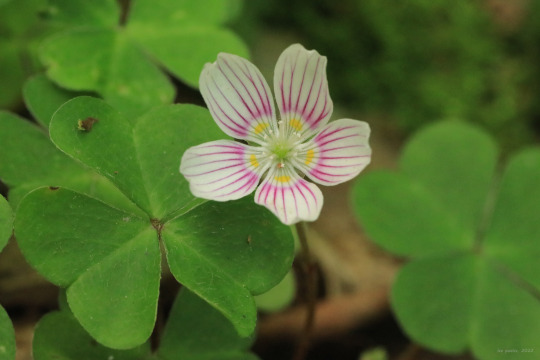

Mountain laurel (Kalmia latifolia) ruled on the expansive plains of Dolly Sods today. It’s impossible for me to describe how intensely beautiful this display is in mid-June. In places, undulating waves of pink and white flowers extended to the visible horizon. On top of the mountain laurel, it was a gorgeous day for a long hike in the wilderness, with the cool-crispness of an early spring or late fall day and wispy clouds vaulting overhead in a brisk, buffeting wind. In the deep, rich woods off Red Creek Canyon, exquisite mountain wood sorrel (Oxalis montana) was in bloom, and the summer boletes were already out of the ground.
#appalachia#vandalia#west virginia#allegheny mountains#monongahela national forest#dolly sods#dolly sods wilderness#red creek canyon#fungi#mushroom#bolete#oxalis montana#mountain wood sorrel#sourgrass#kalmia latifolia#mountain laurel
121 notes
·
View notes
Text

Rumex sanguineus / Red-Veined Sorrel
#Rumex sanguineus#Red-veined sorrel#Red veined sorrel#Bloody dock#Red veined dock#Red-veined dock#Nature photography#Edible plants#Home
3 notes
·
View notes